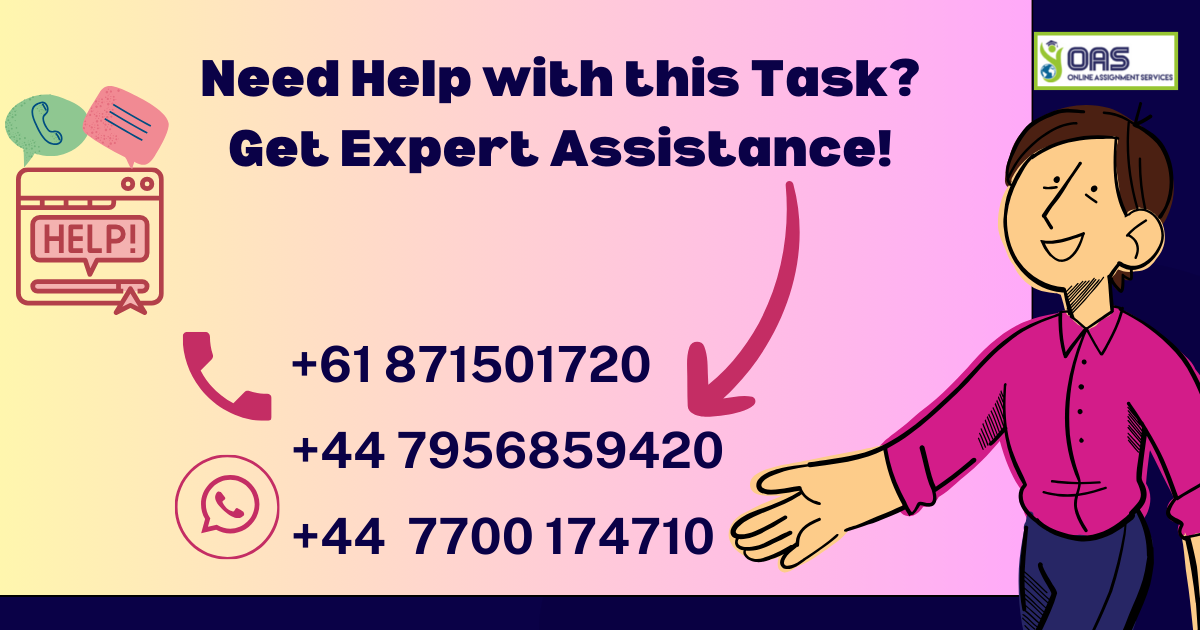HSYP8008: Peer Review and reflection Assignment Help

Question
HSYP8008: This constitutes the second part for the assessment task 2 which is centered around public health nutrition program. In the present assignment (Part B), students are supposed to critique on two of the PHN program peer presentations and provide a reflection for the PHN program proposal developed by themselves.
Solution
The solution incorporates critique for two of the presentations by highlighting the strengths and weaknesses for both the respective presentations and providing recommendation for how the presentations could have been improved. Secondly, the solution also includes a reflection of the PHN program proposal developed by the student themselves. This should discuss the student’s journey related to understanding and development of the program as well as assess the quality of the program.
The first part of the solution is a critical review for one of the peer’s presentation on the topic of “Food insecurity among Indigenous Australians” by Ethan’s Lewis and Petrea cantrall. Read a snippet of how our experts have critically analysed the strengths and weaknesses of the presentation and proposed recommendations for improvement below.
Critique of first presentation
Strengths and weaknesses
The strength of this presentation was that it highlighted a major public health issue especially for disadvantaged populations. 26% of the Aboriginal people experience food insecurity in Australia [1].
The weakness of the program was that the evaluation part was less focused.
Recommendation
To improve this program further I would suggest educating the Aboriginal population not to waste food. Food wastage is one of the primary reasons for upsurge in food insecurity [3]. Furthermore, the program needs to be in adherence to the culture of Aboriginal culture [4].
This is only 50% of the critique written by our experts. To know more, WhatsApp us at +447956859420.

The second critique is done for the proposal presented on the topic of “Childhood obesity” by Tejwant Kaur and Majeena Ke. Our experts ensure the the critique written by them are aimed at improving the presentation and provides a framework to better address the issues highlighting in the respective presentation.
Critique of second presentation
Strengths and weakness
Strength of this presentation was the use of nutritional as well as physical activity approaches in reducing childhood obesity. As sedentary lifestyle is a major risk factor for obesity, use of multipronged efforts including dietary change and physical activity is likely to be more effective in decreasing the prevalence of childhood obesity [6].
The weakness of this presentation was that although statistics related to childhood obesity were presented orally, it would have added more value to depict these statistics.
Recommendations
Family based interventions may be more beneficial as the children may not understand the implications of excess weight at an early age. Family based interventions have been proven to be effective in reducing childhood obesity as parenting style and family functioning plays a vital role in developing dietary habits [8].
Like how our experts have curated the critique for the two presentations? Our experts can help you too- onlineassignmentservices1@gmail.com.
This is followed by the second part of the assignment, which involves a reflection on the PHN program developed by the student themselves. Keep reading to know how our experts have written a reflection demonstrating abilities of self-reflection aimed at assessment of one’s own presentation while simultaneously providing a pathway towards improvement in the quality and presentation of the program proposal.
Reflection
This reflective piece of writing demonstrates self-reflection on our program stunning in India. Given the complex nature of stunting and the interventions which can be used, we conducted research on a multi sectorial approach which helped in gaining insights into employing diverse public health interventions. Initially I found it hard to apply the program logic model as I was unable to segregate the inputs and outputs. However with literature search and help from my peers I was able to understand the use of program logic model. Using health education, a dominant risk factor for stunting i.e., lack of awareness regarding benefits of nutrition for pregnant women and children, can be addressed [10]. Our program focused on connected interventions using political commitment and community based approach to bring a reduction in prevalence of stunting in children.
Reflecting on the quality of our program quality, we have considered the varied risk factors of stunting in India. Stunting is a public health issue of concern as it increases the risk of morbidity and mortality [11]. To understand a public health issue, it is essential to understand the social determinants of the issue to identify the root cause. Exploring the contextual factors are considered as drivers of successful public health intervention [12]. Our presentation was based on one of the sustainable development goals to reduce stunting in children.
To improve our program further, I shall focus on engaging health professionals as stakeholders as well. Nutrition specific health education delivered by healthcare professionals is likely to reduce stunting to a considerable extent [11]. Also, using a multifaceted approach, health education combined with vitamin supplementation for pregnant women has been shown to be effective in reducing stunting [13].
Want to read more? We can assist you better over a call- +61 871501720.

